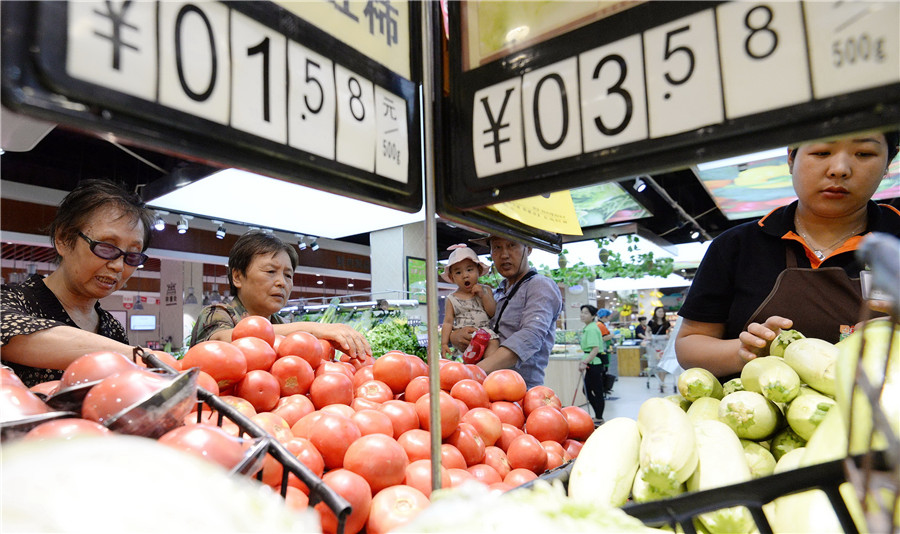Market reform for stronger economy
By Tian Guoqiang | China Daily | Updated: 2019-12-12 08:12

China's economic growth has been slowing quarter by quarter in 2019, but it has generally remained stable. In fact, the overall growth rate has been within the expected target of 6 percent to 6.5 percent the government set at the beginning of the year.
For an economy of more than $10 trillion, it is not easy to maintain such a growth rate at a time when unilateralism and trade protectionism have been rising in many economies. Although external and cyclical factors have contributed to China's slowing growth rate, domestic institutional and structural factors are the main reasons for the slowdown.
The US-China trade war is not likely to be resolved in the short term, while external risks and uncertainties, which are beyond China's control, might increase. Therefore, China should depend on its own plans and efforts to maintain economic stability and sustainability, and address the issues of imbalance and inadequacy in its economic development.
In the face of external shocks, cyclical risks and domestic structural problems, it is important that China adopt some counter-cyclical policies. At the same time, it should also ensure that such policies are in line with the general direction of market-oriented reform and higher-quality opening-up. It should fix the inefficient systems and economic structure through reform and promote economic transformation through all-round opening-up, in order to improve the institutional environment and produce enough dividends to ensure sustainable growth.
To maintain sustainable economic growth, China should use more countercyclical policies through fiscal, monetary, macro-prudential and industrial policy tools, apart from adopting a proactive fiscal policy to help private enterprises boost their output and revenue, and improve people's well-being. To this end, China should implement the tax-cut and fee-reduction policy while increasing government spending to stimulate and boost efficient investment and endogenous consumption. And it should maintain a sound yet relatively loose monetary policy, supplemented by macro-prudential policies, lowering of the reserve requirement ratio and interest rate, if and when needed.
There is also a need to advance institutional and market-oriented structural reforms based on the principle of fair competition and ownership. Besides, China should take measures to ensure State-owned enterprises, and private and foreign-funded companies engage in market competition on an equal basis in order to end the distorted resource distribution system and break the SOEs' monopoly in certain sectors. By so doing, China will allow the market to play a decisive role in resource allocation.
But that is not to say SOEs or selective industrial policies are unnecessary. Every country needs SOEs and suitable industrial policies, especially in sectors that are closely related to people's livelihood and national security, and those that provide public goods.
Still, to maintain sustainable growth, China needs to devise a timetable and road map for further opening-up and intensifying domestic reform, so as to neutralize the threat posed by rising anti-globalization and protectionism in some economies.
Recently, the China Banking and Insurance Regulatory Commission abolished the previous restrictions on the shareholding ratio and business scope of foreign entities in the financial sector, extending national treatment to foreign capital. The move will lead to better and fairer competition between domestic and foreign capital.
In the future, higher-level opening-up should be extended to the telecommunications, education, healthcare and eldercare sectors to form a unified and open modern market system with orderly competition.
Opening-up in the new era should focus on not only the flow of goods and factors, but also institutional opening-up in terms of rules and agendas so that China can conduct negotiations on bilateral and multilateral free trade agreements in an all-round way, safeguard its interests, and help work out better global trade rules.
Competition among countries is in essence competition of systems, institutions, technologies, talents, resources and powers of discourse, with institutional competition being the most fundamental. And a good competitive system helps promote technological progress, cultivate talents, better allocate resources and enhance discourse power.
In short, China needs to use counter-cyclical policy regulation tools, including fiscal, monetary and macro-prudential policies and a moderate amount of industrial policies to timely cope with the complex internal and external situations and promote steady growth. Counter-cyclical regulations, after all, are aimed at laying the foundation and creating conditions for further deepening structural reform. And the stimulation and strengthening of economic development and endogenous power still lie in providing the basic institutional environment for market-oriented reform.
However, China needs time to build a modern and mature market system, for which it has to shift focus from industrial policies to competition policies. But only through orderly market-oriented reform can China build a modern economic system.
The author is director of the Institute for Advanced Research of Shanghai University of Finance and Economics. The views don't necessarily represent those of China Daily.
























